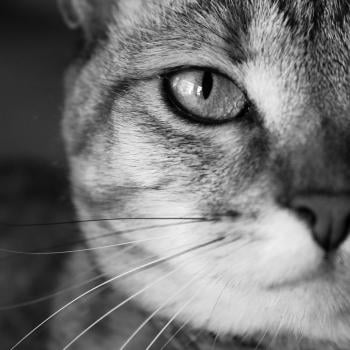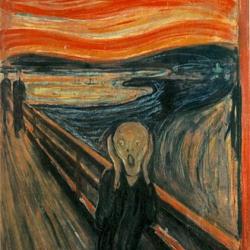Editors' Note: This article is part of the Patheos Public Square on Religion and Visual Art. Read other perspectives here.
You can't talk about a theology of the arts without talking about beauty. For the beauty of God underlies the creativity of artists of faith. "Beauty" here does not means "prettiness"; divine beauty has a moral as well as an aesthetic dimension.
I want to elaborate these statements with reference to Islam and Christianity, the two religions with which I'm most familiar. "Act beautifully, as God has acted beautifully towards you," says Sura 28:77. Muslim scholar Seyyed Hossein Nasr, in his essay "Islamic Art," explains that "to beautify things is to see God's beauty reflected in things and therefore to turn to God." Act beautifully. Beautify things. These are Islam's imperatives.
For Christians, the imperative — no, "inspiration" would better catch Christianity's tone — comes from two foundational biblical motifs. First, in the creation narrative, "God created humankind in his image." Christian artists hear this statement as charging them to live and act in the image of their Creator — that is, to become creators themselves. As poet Luci Shaw puts it in her essay "Beauty and the Creative Impulse," "we were each, in the image of our Creator, created to create, to call others back to beauty."
The second foundational biblical motif inspiring Christians to creative work is formulated in Colossians 1:15-16: Christ "is the image of the invisible God, the firstborn of all creation... All things have been created through him and for him." Christians, baptized into the life of Christ, are commissioned to carry on his life through their own particular God-given gifts. Recalling Jesus as "image of the invisible God," Cardinal Godfried Danneels of Mechelen-Brussels, commented in Image (#54) that art, too, "is seeing what can't be seen." Through faith we're enabled, in a sense, to "see what is not visible." But we also need the visible. We need art, he stresses, because it "gives us the power to bring forth something that the senses wouldn't otherwise perceive."
Despite Islam's and Christianity's different foundational statements about creativity, there's a deep resonance between the two faiths in the centrality they give to beauty — and to the arts as making visible the beauty whose only fullness can be God.
Do these religions privilege certain artistic media for drawing us into God's beauty?
For Islam, the answer is grounded in the Quran: the vocal transmission through the Prophet Muhammad of God's own words, in Arabic, as addressed to the local community of Muhammad's hometown of Mecca, but also to every community of the world.
The Quran, as vehicle for the beautiful voice of God, is God's art. Like all voices, it calls for response, a voice in answer, but ideally a voice as beautiful (given human limitations) as its own. So the art of Muslims — the effort to form that beautiful response — is essentially vocal. Chanting the Quran is Islam's highest art form, and various styles of chant have developed over the centuries, each beautiful in its own way.
For Islam, the voice is so pre-eminent that even visual arts are in a sense vocal. Most strikingly, Arabic calligraphy looks like a written flow, like "music for the eyes," as tradition puts it. There are styles of Muslim calligraphy so swirlingly elaborated that the words cannot in fact be read; they are there to be contemplated in their beauty. ("Calligraphy" literally means "beautiful writing.") Take a look at the stunning artistry of contemporary American calligraphic master Mohamed Zakariya. Zakariya sees his art as an offering of beauty to the God who loves beauty, indeed as "a kind of worship, a religious event that prepares one for prayer."
Contemporary Christian painter Makoto Fujimura would likely concur in this last statement. But Fujimura's key terms for his art come, not surprisingly, from the Christian Scriptures. There he finds an extravagantly generous God, who gave his only Son for the world, and it is this God who inspires the dazzling visual extravagance of Fujimura's canvases.
Yet we can't say that painting is a privileged art medium for Christianity. Unlike Islam, Christianity privileges no particular medium, and this is because Christianity is an incarnational religion. The Quran's counterpart in Christianity is not the Bible but the Word made flesh, Jesus. Because of Christ's incarnation, God's glory can be represented by any medium of the sensual world.




